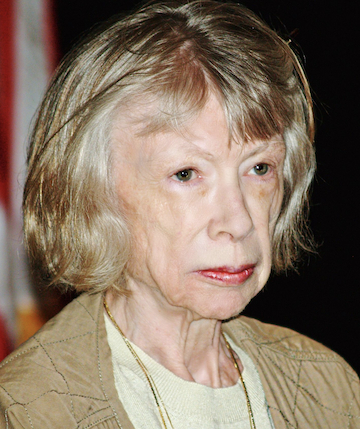On this date in 1934, author and journalist Joan Didion was born in Sacramento, Cal. Renowned for her unflinching depiction of psychological fragmentation and grief in the memoir The Year of Magical Thinking (2005), Didion’s literary journalism documents turbulent eras in American history, such as in the collection entitled The White Album (1979). Later, Didion explored the corruption of American political institutions and changing political strategies in the late 1980s in the collection After Henry (1992).
The Year of Magical Thinking detailed the deaths in less than 2 years’ time of her husband, the writer John Gregory Dunne, and their daughter Quintana Roo Dunne. It was a Pulitzer Prize finalist in the biography/autobiography category. Writing in Vanity Fair in 2011, Christopher Hitchens called Didion’s memoir Blue Nights (2011), in which she recounted Quintana’s death, a “supremely tender work of memory.” Didion was presented with the National Humanities Medal in 2013 and her life was made the subject of a documentary, Joan Didion: The Center Will Not Hold (2017).
Didion was raised Episcopalian but identified with agnosticism. In a 2006 interview on religion and grief, Didion said, “If I had been going to find comfort in religion I would have found it before now.” When asked about the rituals pertaining to death, which often presume the existence of the afterlife, Didion expressed skepticism, “It’s one of the clichés people say to you after a death: ‘He lives in our memory, she lives in our memory.’ I mean I don’t disbelieve; I just don’t believe. It is an agnostic position.” (Beliefnet.com, 2006)
Didion’s rhythmic prose style did not spare her more contemptible subjects from unflattering depictions, as is evidenced by her essay “God’s Country” (2000), in which she reserved a special ire for evangelical Christianity and its influence over American politics.
She died from complications of Parkinson’s disease at her home in Manhattan at age 87. (D. 2021)
PHOTO: Didion at the 2008 Brooklyn Book Festival in New York; photo by David Shankbone under CC 3.0.


